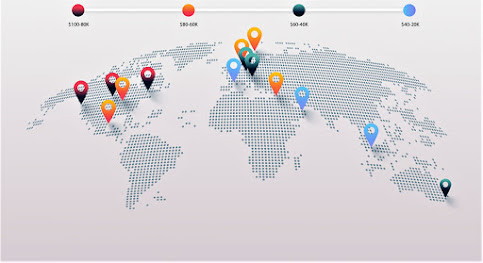What Are The E-wallet Trends In Malaysia?
A study conducted by Mastercard in 2020 showed that Malaysia is a leader among its Southeast Asian (SEA) neighbors in terms of digital wallet usage. The study also found that E-wallet usage is 40 percent in Malaysia, 36 percent in the Philippines, 27% in Thailand and 26% in Singapore. Mastercard collected data from 10,000 consumers in the Asia Pacific region.
Where customers use E-wallets?
In SEA countries, E-wallet usage has increased by 8% since 2019. Among all payment methods, cash was still the most preferred payment method for the SEA population in 2020 followed by credit/debit cards at 22.7%, and E-wallets at 22%. Another study by Oppotus about E-wallet trends in Malaysia found that 60% of Malaysian customers used E-wallets in Q3 2020, which is double the number from 27% in Q3 2019 more than has been found. The study also revealed that on an average, Malaysian customers used 2-3 E-wallets during the third quarter of 2020.
E-wallet landscape in Malaysia
The growth of the tech industry and e-commerce has also added to the growing popularity of digital payments in Malaysia. Whereas convenience is the most important reason why customers prefer to pay through E-wallets. Financial transaction security, reward points and cashback schemes have also contributed to the growth of E-wallets in the Malaysian market.
1. Boost
With 18% market share, Boost has become the top E-wallet in the Malaysian market. Boost is an award-winning lifestyle E-wallet, launched in 2017 by Axiata Group Berhad, a telecommunications giant in Malaysia.
2. Touch ‘n Go
The Touch 'n Go smart card is the only electronic payment system used in Malaysia toll expressway and highway operators. TNG allows users to make payments through QR codes at over 280,000 merchant touch points. Wallet users can pay for tolls, street parking, car-sharing apps and taxis via RFID.
3. BigPay
BigPay is quite different from other E-wallet apps. It works in conjunction with a physical debit card. BigPay users can pay anywhere where physical cards are not accepted. Users can pay using BigPay at over 40 million merchants worldwide, excluding Israel and North Korea.
4. Maybank QRPay
Maybank Anytime & Everywhere, aka MAE QRPay E-wallet, is a banking E-wallet open to non-Maybank customers as well. In today's digital onboarding, users are asked to register for a virtual bank account followed by registration and KYC after which users get a Maybank account number and a virtual debit card.
5. Samsung Pay
Unlike E-wallets in the Malaysian market, Samsung Pay does not actually store funds. Instead it holds payment card information and acts as an additional layer between the card and the POS. Its unique proprietary MFT technology makes it usable, which allows the smartphone to mimic the magnetic stripe on a debit/credit card.
6. Fave Pay
Unlike other E-wallets in Malaysia, FavePay does not have the ability to deposit money. Instead it is tied to the user's physical card or Grabpay. Using FavePay is beneficial for users if they want to earn cash back while making payments to merchants.
7. GrabPay
GrabPay App enables users to top-up their mobile phones.The service is available for most of the popular telecommunications service providers in Malaysia, including Maxis, Digi, Celcom, TuneTalk and You Mobile.
Conclusion
In fact, as experienced by many countries around the world, the pandemic has devastated the Malaysian economy. On the same side new opportunities and conditions have also emerged for the development and flourishing of the FinTech industry in Malaysia. The E-wallet segment of fintech is at its peak as the need for contactless payments grows in the Southeast Asian market.




Comments
Post a Comment